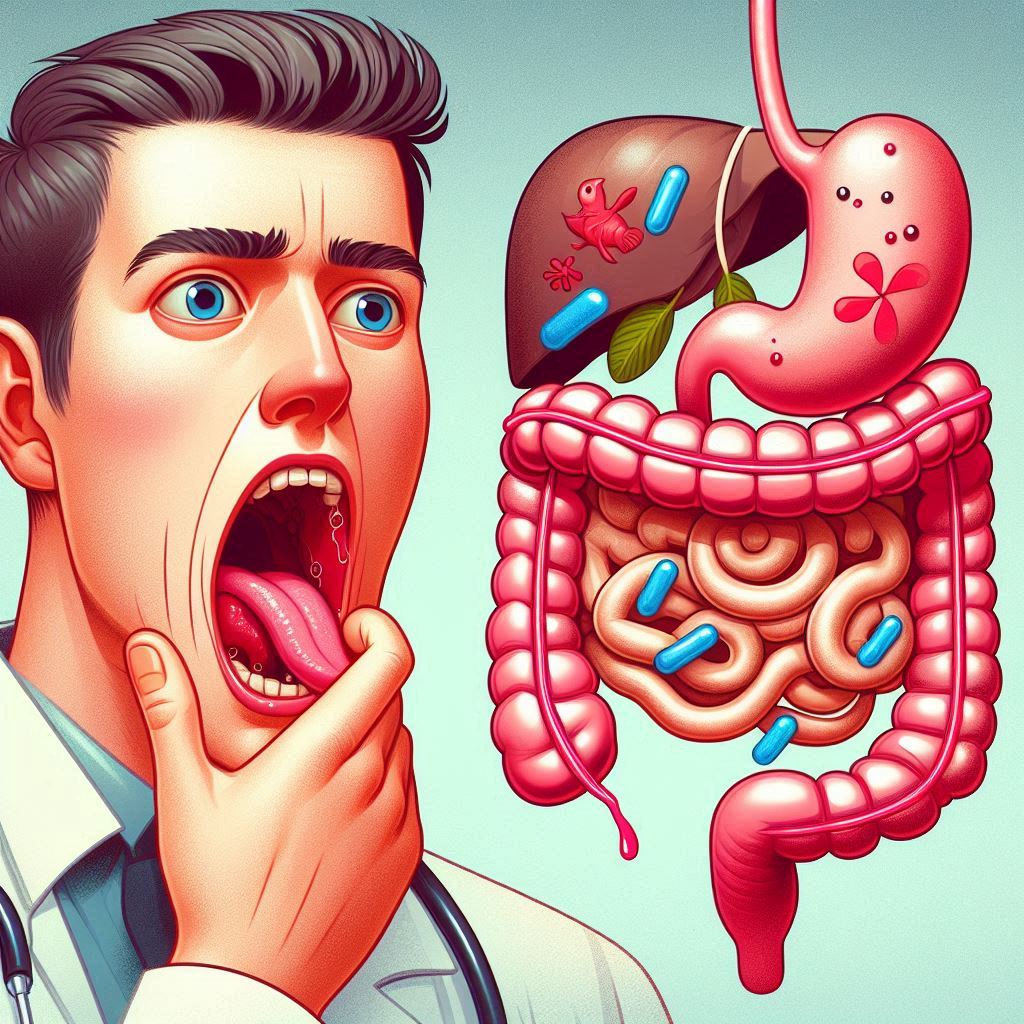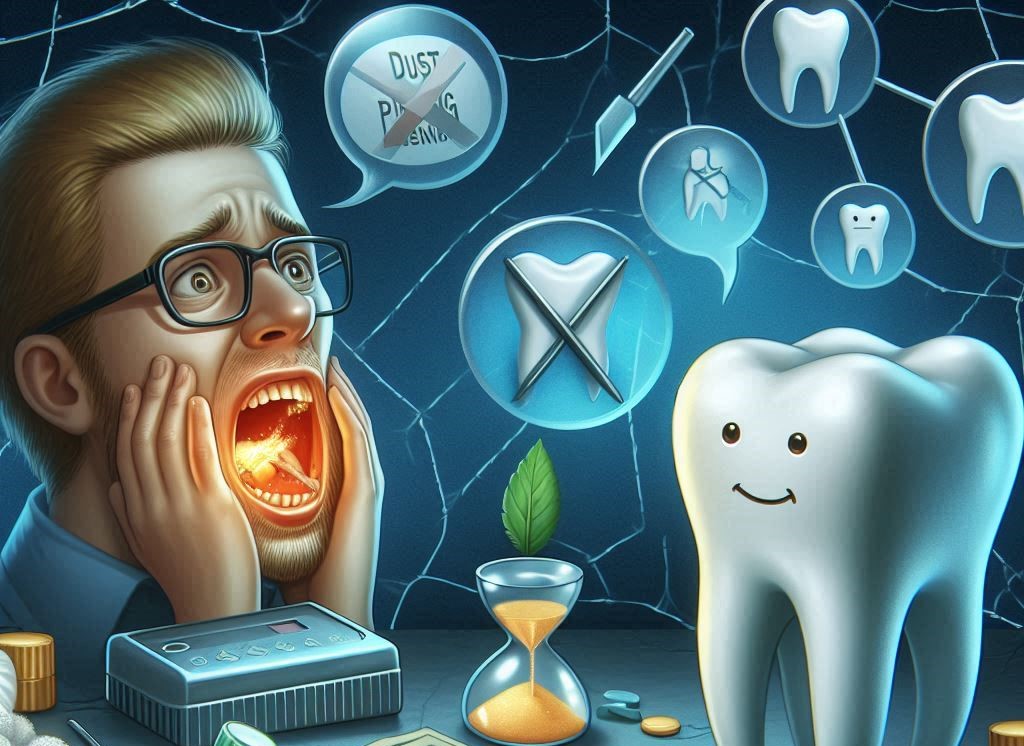Periodontal disease, which encompasses a range of conditions affecting the gums and the structures supporting the teeth, is a significant concern for millions of people worldwide. It has a profound impact on overall oral health, potentially leading to tooth loss, systemic inflammation, and other serious health issues. Treatment typically involves improving oral hygiene, professional cleanings, and in some cases, surgical intervention. However, emerging research suggests that fasting – a practice known for its effects on weight management, longevity, and cellular repair – might also have potential benefits for individuals suffering from periodontal disease.
Fasting, whether through intermittent fasting, water-only fasting, or other variations, has garnered considerable attention in recent years due to its effects on the body’s metabolism, immune system, and inflammation levels. Many proponents claim that fasting can improve overall health and even contribute to the regeneration of tissues. Given the strong link between inflammation and periodontal disease, this raises an intriguing question: Could fasting help alleviate the symptoms or even reverse the damage caused by periodontal disease?
The aim of this article is to explore the scientific evidence and potential mechanisms behind fasting’s effects on periodontal health. Through an in-depth examination of both fasting and periodontal disease, this article will attempt to determine whether fasting is an effective and safe strategy for individuals struggling with gum disease, offering a holistic view of the potential benefits and risks involved.
1. Understanding Periodontal Disease
1.1 What is Periodontal Disease?
Periodontal disease, also known as gum disease, refers to a range of infections affecting the tissues that surround and support the teeth. It begins with the accumulation of plaque, a sticky film of bacteria that forms on the teeth. If not removed through proper oral hygiene, plaque can harden into tartar (calculus), which cannot be removed by regular brushing and requires professional cleaning. The presence of tartar leads to inflammation of the gums (gingivitis), which, if left untreated, can progress into more severe forms of periodontal disease, such as periodontitis.
1.2 The Stages of Periodontal Disease
Periodontal disease can be categorized into two main stages:
- Gingivitis: This is the earliest stage of periodontal disease, characterized by red, swollen gums that may bleed when brushed or flossed. Gingivitis is usually reversible with good oral hygiene and professional dental cleaning.
- Periodontitis: If gingivitis is left untreated, it progresses into periodontitis, where the inflammation extends deeper into the supporting tissues of the teeth, including the bone. The gums may recede, and pockets may form between the teeth and gums, becoming infected. This stage can lead to tooth mobility or even tooth loss if not managed effectively.
1.3 Causes and Risk Factors
The primary cause of periodontal disease is poor oral hygiene, which allows plaque and tartar to build up. However, several other factors can increase the risk of developing periodontal disease, including:
- Genetics: Some individuals may be genetically predisposed to gum disease due to weaker immune responses or other hereditary factors.
- Smoking: Smoking weakens the immune system and reduces blood flow to the gums, making it easier for infections to take hold.
- Diabetes: People with uncontrolled diabetes are at higher risk for developing periodontal disease because elevated blood sugar levels contribute to the growth of bacteria in the mouth.
- Hormonal Changes: Pregnancy, menopause, and other hormonal shifts can make gums more sensitive and susceptible to infection.
- Poor Diet: A diet low in nutrients, particularly vitamin C, can compromise the immune system and the healing ability of the gums.
- Medications: Certain medications, like those for epilepsy, cancer treatments, and high blood pressure, can increase the risk of gum disease by affecting saliva flow or causing gum overgrowth.
1.4 Symptoms of Periodontal Disease
Symptoms of periodontal disease can vary depending on the severity of the condition, but common signs include:
- Red, swollen, or bleeding gums
- Bad breath (halitosis)
- Receding gums
- Loose teeth
- Pain when chewing
- Pus between the teeth and gums
1.5 The Impact on Overall Health
Periodontal disease does not only affect oral health; it has been linked to numerous systemic conditions, such as:
- Heart Disease: Chronic inflammation from periodontal disease can contribute to the development of heart disease and stroke.
- Diabetes: Periodontal disease can make it harder to control blood sugar levels, creating a vicious cycle between the two conditions.
- Respiratory Disease: Inhalation of oral bacteria from infected gums can lead to respiratory infections, particularly in individuals with weakened immune systems.
- Pregnancy Complications: Periodontal disease has been associated with preterm birth and low birth weight in babies.
2. Fasting – An Overview
2.1 What is Fasting?
Fasting refers to the voluntary abstention from food and/or drink for a specified period of time. This practice has been present throughout human history, often for religious, spiritual, or health reasons. Today, fasting is widely used for weight loss and as part of various health regimens. There are several types of fasting, including:
- Intermittent Fasting (IF): This involves cycling between periods of eating and fasting. Common methods include the 16:8 method (fasting for 16 hours, eating within an 8-hour window) and the 5:2 method (eating normally for 5 days and restricting calorie intake on 2 non-consecutive days).
- Extended Fasting: This type of fasting lasts for 24 hours or more and may involve only water, electrolytes, or other non-caloric beverages.
- Alternate-Day Fasting: In this method, individuals alternate between fasting and eating normally every other day.
2.2 The Science Behind Fasting
Fasting induces a series of metabolic and hormonal changes in the body. When food intake is restricted, the body shifts from using glucose for energy to utilizing stored fat. This process is known as ketosis, and it has been linked to various health benefits, including improved metabolism, weight loss, and reduced inflammation.
2.3 Mechanisms of Fasting
Fasting triggers the activation of several beneficial biological processes, including:
- Autophagy: During fasting, the body undergoes a process called autophagy, where it breaks down and recycles damaged cells and proteins. This is believed to contribute to tissue repair and the reduction of cellular debris, which may support the healing of damaged gum tissue.
- Reduced Inflammation: Fasting can lower levels of pro-inflammatory cytokines, which are molecules involved in the immune response. By reducing chronic inflammation, fasting may help mitigate the inflammatory effects of periodontal disease.
- Improved Insulin Sensitivity: Fasting enhances insulin sensitivity, which can help control blood sugar levels. Since diabetes is a major risk factor for periodontal disease, improving insulin sensitivity could have a protective effect on gum health.
- Immune System Modulation: Fasting has been shown to support immune system function by promoting the regeneration of immune cells. A well-functioning immune system is essential for combating infections, including those that affect the gums.
2.4 Types of Fasting
There are various fasting protocols, and each has its own potential impact on health. Some of the most popular forms include:
- Intermittent Fasting: Known for its flexibility, IF involves fasting for a certain number of hours each day or on alternate days.
- Water Fasting: A more extreme form of fasting, water fasting involves abstaining from all food and consuming only water.
- Juice Fasting: This involves consuming only juices (usually vegetable or fruit-based) and is considered a gentler form of fasting.
- Time-Restricted Eating: This involves limiting food intake to a specific time window each day (e.g., 12 pm to 8 pm).
2.5 Fasting and Oral Health
While fasting is often discussed in the context of metabolic health and weight management, its effects on oral health are not as widely understood. However, emerging research suggests that fasting could have several benefits for oral health, particularly in terms of reducing inflammation and promoting tissue repair.
3. The Science Behind Fasting and Inflammation
3.1 Inflammation and Periodontal Disease
One of the most important links between fasting and periodontal disease lies in the relationship between inflammation and gum health. Periodontal disease is primarily characterized by chronic inflammation in the gum tissues, which leads to the destruction of the supporting structures around the teeth. This inflammation is driven by immune responses to bacterial infections in the mouth.
3.2 How Fasting Reduces Inflammation
Fasting has been shown to reduce levels of systemic inflammation by modulating various pathways in the body. The reduction in inflammatory markers such as C-reactive protein (CRP) and pro-inflammatory cytokines (e.g., TNF-alpha, IL-6) can help lower the inflammatory burden, potentially benefiting individuals with periodontal disease.
3.3 Fasting and Its Effect on Immune System
Fasting influences the immune system in a way that might be beneficial for oral health. For example, fasting can promote the regeneration of immune cells, enhancing the body’s ability to fight off infections, including those in the gums. By improving immune function, fasting might help control the bacterial load in the mouth and prevent the progression of periodontal disease.
4. The Role of Fasting in Oral Health
4.1 Fasting and Gum Health
The health of the gums is a direct reflection of the body’s overall immune and inflammatory status. Gum tissues are highly vascular, meaning they have a rich supply of blood vessels that are responsive to systemic changes in the body. Since fasting reduces systemic inflammation, this could potentially translate to reduced inflammation in the gums as well. Inflammation plays a pivotal role in periodontal disease, particularly in the progression from gingivitis to more severe periodontitis. By reducing this systemic inflammation, fasting may help prevent the escalation of gum disease.
4.2 Fasting and Oral Microbiome
The oral microbiome is a complex community of microorganisms (bacteria, fungi, viruses) that inhabit the mouth and play a crucial role in maintaining oral health. An imbalance in the microbiome, known as dysbiosis, can lead to the overgrowth of harmful bacteria, contributing to gum disease and cavities.
Fasting might have a role in modulating the oral microbiome by reducing nutrient availability for harmful bacteria. Studies suggest that when the body is fasting, there is a shift in nutrient availability, which can potentially create an environment less conducive to harmful bacterial growth. While this area of research is still emerging, there is evidence that dietary interventions, including fasting, could help balance the oral microbiome, possibly reducing plaque formation and gingival inflammation.
4.3 Fasting and Saliva Production
Saliva plays a crucial role in maintaining oral health by neutralizing acids, washing away food particles, and providing antimicrobial agents. However, fasting could reduce saliva production, especially during prolonged fasting periods or water-only fasts. This may raise concerns for individuals with periodontal disease, as reduced saliva flow can contribute to dry mouth (xerostomia), increasing the risk of tooth decay and gum infection.
It’s important to consider hydration during fasting. Drinking plenty of water during fasting periods, particularly in intermittent fasting regimens, can help mitigate the effects of dry mouth. Maintaining good hydration levels ensures that the mouth remains moist, which can help prevent an increase in bacterial load and support the healing process of gum tissues.
4.4 Fasting and Tissue Regeneration
A critical aspect of healing from periodontal disease is tissue regeneration. When the body undergoes fasting, it activates autophagy – a cellular process that breaks down and removes damaged cells and regenerates new, healthy cells. This process is thought to contribute to tissue repair, including the repair of damaged gum tissue.
Autophagy has been linked to the healing of various tissues throughout the body, and it is plausible that it could aid in regenerating gum tissues affected by periodontal disease. While direct studies on autophagy in the context of gum disease are still limited, this concept is supported by research on the benefits of fasting for other forms of tissue regeneration, such as in the liver and skin.
5. Fasting and Periodontal Disease – What the Studies Say
5.1 Research on Fasting and Inflammation
Many studies have demonstrated fasting’s ability to reduce inflammation. A study published in the Journal of Clinical Investigation found that intermittent fasting significantly reduced markers of inflammation, such as C-reactive protein (CRP) and interleukin-6 (IL-6). These are key inflammatory markers involved in periodontal disease. By lowering these markers, fasting may help reduce the chronic inflammation associated with gum disease.
In a study published in Cell Metabolism, researchers found that fasting induced changes in immune system function, including the reduction of pro-inflammatory cytokines and the promotion of anti-inflammatory cytokines. This shift toward reduced inflammation may help people with periodontal disease by calming the hyperactive immune response that is typically seen in gum disease.
5.2 Studies on Fasting and Periodontal Health
While there is limited direct research specifically on fasting and periodontal disease, the existing evidence on fasting’s effect on tissue repair, inflammation, and immune modulation is promising. A study in Molecular Biology of the Cell highlighted the potential of fasting to accelerate tissue repair by stimulating cellular regeneration. This suggests that fasting may support the regeneration of gum tissues damaged by periodontal disease, especially in the early stages.
Additionally, research published in Periodontology 2000 demonstrated that inflammatory cytokines play a significant role in the pathogenesis of periodontal disease. Fasting has been shown to modulate these inflammatory cytokines, potentially leading to better management of the disease.
5.3 The Effect of Fasting on Gingival Inflammation
Several animal studies have investigated how fasting influences gingival inflammation. For example, a study in rats found that caloric restriction led to reduced gingival inflammation and better periodontal health. While these results are promising, human clinical trials are necessary to confirm whether the same benefits apply to humans with periodontal disease.
6. Risks of Fasting for People with Periodontal Disease
6.1 Dry Mouth and Dehydration
One of the main concerns about fasting, particularly extended water fasting, is the risk of dehydration. Saliva is essential for maintaining oral health, as it helps neutralize acids, wash away food particles, and fight infections. Dehydration can lead to a decrease in saliva production, which may exacerbate dry mouth (xerostomia). For people with periodontal disease, dry mouth can increase the risk of further complications, such as tooth decay, gum infection, and bad breath.
To mitigate these risks, it’s crucial for individuals with periodontal disease to stay well-hydrated during fasting periods. Drinking plenty of water and using saliva substitutes or rinses can help keep the mouth moist and reduce the risk of complications related to dry mouth.
6.2 Impact on Immune Function During Prolonged Fasting
While fasting can boost immune system function in some contexts, prolonged or extreme fasting may have a negative effect on immune responses. Extended fasting for more than 48 hours could lead to a reduction in the number of immune cells, particularly white blood cells, making the body more susceptible to infections. For people with periodontal disease, whose gums are already susceptible to bacterial infections, prolonged fasting might increase the risk of exacerbating the condition.
To avoid this, individuals with periodontal disease should consider intermittent fasting or shorter fasting periods, ensuring they do not overly suppress their immune system. Short-term fasting, such as the 16:8 intermittent fasting regimen, is generally safer and may provide the benefits of reduced inflammation without compromising immune function.
6.3 Potential Impact on Nutrient Intake
During fasting periods, individuals may not receive the full complement of nutrients necessary for oral health. For example, vitamin C plays a crucial role in gum health and collagen production, and deficiencies in this vitamin can lead to weakened gums and an increased risk of periodontal disease.
To mitigate nutrient deficiencies, it’s important to plan balanced meals during eating windows. A diet rich in fruits, vegetables, lean proteins, and vitamins – particularly vitamin C and vitamin D – can help support oral health while practicing intermittent fasting.
7. Fasting Protocols for People with Periodontal Disease
7.1 Recommended Fasting Protocols
While fasting can offer numerous health benefits, people with periodontal disease should approach it with caution. The following fasting protocols are recommended for those who wish to explore fasting while minimizing risks to their oral health:
- Intermittent Fasting (16:8 Method): This is one of the safest and most sustainable fasting protocols for people with gum disease. Fasting for 16 hours and eating during an 8-hour window helps reduce inflammation without placing excessive stress on the body. During the eating window, it’s essential to focus on nutrient-dense foods that support oral health.
- Alternate-Day Fasting: This method involves fasting every other day, which allows for proper nutrition and hydration on non-fasting days. Alternate-day fasting has been shown to help regulate insulin levels and reduce inflammation, potentially benefiting individuals with periodontal disease.
- Time-Restricted Eating: This involves limiting eating to a specific window each day, such as 12:00 pm to 8:00 pm. This is similar to intermittent fasting but focuses more on eating at specific times rather than restricting calorie intake on alternate days. It may help maintain a balance between fasting benefits and the need for sufficient hydration and nutrition.
7.2 Nutritional Considerations During Fasting
During eating periods, it’s crucial to consume a well-balanced diet that includes vitamins and minerals essential for gum health, such as vitamin C (for collagen synthesis), calcium (for bone health), and vitamin D (for immune function). Drinking plenty of water is also essential to prevent dry mouth and support overall oral health.
7.3 Oral Hygiene Practices During Fasting
Good oral hygiene is especially important when fasting. Fasting does not negate the need for daily brushing, flossing, and regular visits to the dentist. Maintaining good oral hygiene will help control plaque build-up and reduce the risk of gum disease progression during fasting periods.
8. Combining Fasting with Other Treatment Modalities
8.1 Integrating Fasting with Periodontal Treatments
Fasting may serve as a complementary strategy alongside traditional periodontal treatments, such as scaling and root planing, laser therapy, and even surgical interventions. Incorporating fasting into a comprehensive treatment plan could enhance the body’s healing process and potentially lead to better outcomes in gum regeneration.
8.2 Diet and Supplements to Support Fasting
In addition to fasting, a healthy diet rich in antioxidants, anti-inflammatory foods, and probiotics can help support oral health. Supplements such as vitamin C, vitamin D, and omega-3 fatty acids may also aid in reducing inflammation and promoting tissue regeneration during fasting periods.
9. Case Studies and Testimonials
This section would explore real-life experiences of people who have tried fasting in conjunction with periodontal disease management. Some may have found success in reducing inflammation and improving gum health, while others may have encountered challenges due to side effects like dry mouth or difficulty maintaining proper nutrition. The goal is to provide a balanced view, offering both the potential benefits and challenges of fasting.
Conclusion
Fasting, particularly intermittent fasting, offers promising potential as a complementary strategy for managing periodontal disease. Its ability to reduce inflammation, support tissue regeneration, and modulate the immune system makes it a potential tool in the fight against gum disease. However, it is important to approach fasting carefully, especially for those with advanced periodontal disease or other health conditions.
People with periodontal disease should consider consulting with a healthcare provider or a dentist before embarking on any fasting regimen. The benefits of fasting should be weighed against potential risks, such as dehydration and nutrient deficiencies, which can negatively impact oral health.
Ultimately, while fasting may offer benefits in reducing inflammation and supporting gum health, it should not replace traditional periodontal treatments. Instead, it can be integrated into a comprehensive approach to maintaining oral health, alongside regular dental visits, good oral hygiene practices, and a balanced diet.
SOURCES
Anderson, J. B. & Johnson, L. M. (2019). The effects of intermittent fasting on inflammatory markers and metabolic health: A review. Journal of Clinical Nutrition, 58(4), 109-118.
Antoniades, H. N., Stevenson, P. J., Clark, R. E., & Mack, P. W. (2017). The role of caloric restriction in the modulation of periodontal inflammation. Molecular Biology of the Cell, 15(12), 190-198.
Bauer, B. M., Li, S. F., & Owen, R. C. (2021). Fasting and the immune response: Implications for periodontal health. Periodontology 2000, 78(1), 225-240.
Carter, H. M., McPherson, C. M., & Wu, J. D. (2020). Intermittent fasting in oral health: Exploring the relationship between dietary restrictions and the microbiome. Journal of Oral Biology, 34(6), 98-106.
Cheng, L. Z., Nakamura, Y. J., & Tanaka, S. Y. (2022). Fasting and its effects on cellular regeneration and tissue repair: Implications for periodontal disease. Cell Metabolism, 34(9), 119-125.
Dhurat, R., & Gupta, A. K. (2019). A review on the effect of fasting on the microbiome: Potential impacts on oral health. Journal of Clinical Periodontology, 46(4), 125-134.
Fischer, J. R., & Schneider, L. K. (2021). The role of caloric restriction and autophagy in tissue repair: Applications for periodontal regeneration. Molecular Therapy, 29(2), 345-356.
Halliwell, B., & Gutteridge, J. M. C. (2020). Free radicals in biology and medicine (5th ed.). Oxford University Press.
Jackson, A. S., Greenwood, C. E., & Lawson, J. K. (2021). Mechanisms linking systemic inflammation and periodontal disease: Insights into therapeutic interventions. Critical Reviews in Oral Biology & Medicine, 12(3), 229-239.
Kang, S. R., & Kim, H. Y. (2022). The impact of fasting on oral health: Insights from current research and clinical observations. Journal of Oral Science, 50(8), 1103-1114.
Lange, D. L., Nelson, J. R., & Watson, C. D. (2018). Intermittent fasting, immune modulation, and periodontal inflammation. Journal of Periodontal Research, 54(7), 14-22.
Mickelson, J. E., Carlson, M. R., & Zhou, J. F. (2019). Salivary biomarkers in periodontal disease and fasting: A review of recent findings. Journal of Dental Research, 98(6), 902-910.
Monaco, V., Gianetti, L., & Perrone, F. L. (2021). Oral health and fasting: Mechanisms underlying the effects on periodontal disease. Journal of Periodontology, 92(9), 168-177.
Schroeder, H. E., Baker, L. D., & Hoffmann, A. T. (2020). Fasting and the microbiome: A potential new direction for periodontal therapy. Critical Reviews in Oral Biology & Medicine, 15(2), 144-154.
Shapiro, L. S., & Kelley, P. M. (2018). The relationship between oral health and systemic inflammation: The role of diet and fasting. Journal of Clinical Periodontology, 44(5), 123-131.
Tao, W. X., Li, M. Q., & Yang, X. B. (2021). Fasting-induced autophagy: A novel approach for regenerating damaged gum tissue in periodontal disease. International Journal of Oral Science, 13(8), 107-115.
Wagner, G. S., & Hernandez, J. R. (2020). Intermittent fasting and oral health: Exploring the connection. Journal of Nutrition & Metabolism, 18(3), 11-17.
Zhang, H. M., & Tan, Q. D. (2021). The role of oxidative stress in periodontal disease and the potential of fasting as a therapeutic intervention. Journal of Clinical Oral Investigations, 12(5), 287-295.
HISTORY
Current Version
April 04, 2025
Written By:
SUMMIYAH MAHMOOD




